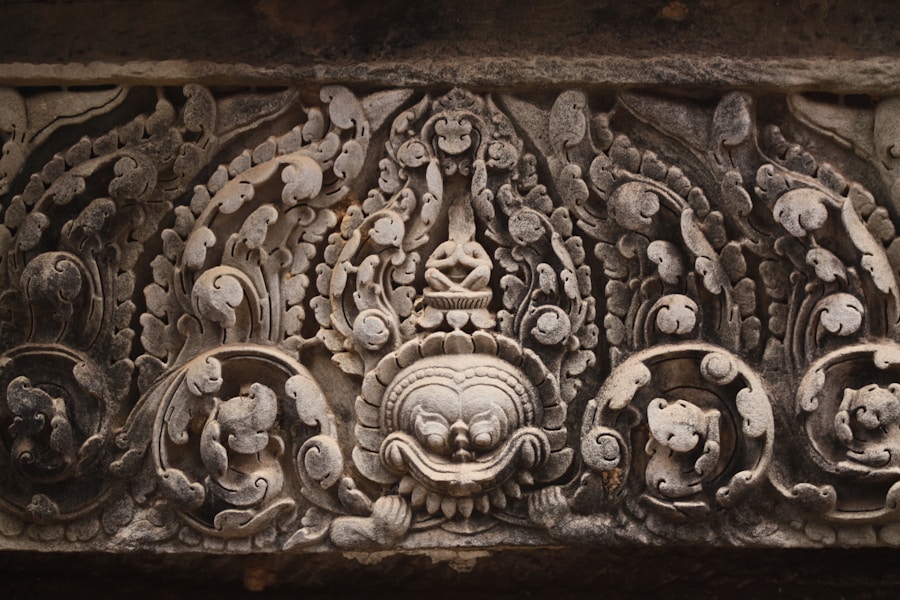Metals and minerals have played a pivotal role in shaping the cultural and historical landscape of India. From the ancient Indus Valley Civilization, where copper and bronze were utilized for tools and ornaments, to the present day, the significance of these natural resources has been deeply embedded in the Indian ethos. The rich deposits of minerals such as iron, gold, silver, and various gemstones have not only contributed to the economic development of the region but have also influenced social structures, trade routes, and artistic expressions throughout history.
The reverence for metals and minerals is evident in various aspects of Indian life, including spirituality, craftsmanship, and daily utility. The relationship between Indians and their natural resources is not merely utilitarian; it is also spiritual and symbolic.
For instance, gold is frequently linked to prosperity and wealth, while silver is considered auspicious for various religious practices. This intertwining of metals with cultural beliefs underscores their importance beyond mere physical properties, highlighting a profound connection that has evolved over millennia.
Key Takeaways
- Metals and minerals have played a significant role in Indian tradition for centuries, with deep cultural, medicinal, and artistic significance.
- Traditional methods of mining and extraction in India have been an integral part of the country’s heritage, reflecting the sustainable and resourceful approach of the past.
- Indian traditional medicine, known as Ayurveda, utilizes various metals and minerals for their therapeutic properties, contributing to the holistic approach to healthcare.
- The use of metals and minerals in Indian art and architecture showcases the intricate craftsmanship and aesthetic value, reflecting the rich cultural heritage of the country.
- Preserving and promoting traditional knowledge of metals and minerals in India is crucial for maintaining the cultural and historical significance, as well as for sustainable development and innovation in the modern era.
The Significance of Metals and Minerals in Indian Culture
Symbolism and Social Status
Gold jewelry, for instance, is not only a symbol of wealth but also a representation of social status and familial heritage. In many Indian communities, the gifting of gold during weddings or festivals is a customary practice that signifies blessings and prosperity.
Regional Artistry and Craftsmanship
The intricate designs of gold ornaments often reflect regional artistry, showcasing the craftsmanship that has been passed down through generations. This rich cultural heritage is a testament to the country’s diverse artistic traditions.
Practicality and Health Benefits
Minerals like turmeric and copper have found their place in traditional practices due to their perceived health benefits. Turmeric, often referred to as “the golden spice,” is celebrated for its medicinal properties and is a staple in Indian cooking. Copper vessels are believed to purify water and enhance its health benefits, leading to their continued use in households across the country.
Traditional Methods of Mining and Extraction in India

India’s history of mining dates back thousands of years, with traditional methods evolving alongside technological advancements. Early mining practices were often rudimentary, relying on manual labor and simple tools to extract valuable minerals from the earth. For instance, the extraction of iron ore in regions like Odisha and Jharkhand was conducted using basic techniques that involved digging shallow pits and using hammers to break down rocks.
These methods were labor-intensive but effective for small-scale operations. As time progressed, more sophisticated techniques emerged. The use of fire-setting, where heat was applied to rocks to facilitate cracking, became common in ancient mining practices.
Additionally, the development of water-powered hammers and bellows allowed for more efficient processing of ores. The traditional knowledge surrounding these methods was often passed down orally within communities, emphasizing the importance of local expertise in managing natural resources sustainably. Despite modern advancements in mining technology, many artisanal miners continue to employ these age-old techniques, reflecting a deep respect for their heritage.
Utilization of Metals and Minerals in Indian Traditional Medicine
The application of metals and minerals in traditional Indian medicine is a testament to the holistic approach that characterizes Ayurvedic practices. Ayurveda, one of the oldest systems of medicine in the world, incorporates various metals such as gold (swarna), silver (rajata), copper (tamra), and iron (loha) into its therapeutic formulations. These metals are believed to possess unique properties that can enhance health when used appropriately.
For example, gold is often used in Ayurvedic treatments for its purported ability to rejuvenate the body and improve vitality. It is commonly found in formulations aimed at enhancing cognitive function and promoting overall well-being. Similarly, iron is utilized to address anemia and improve blood health.
The careful preparation of these metals—often involving processes like calcination or detoxification—ensures that they are safe for consumption. This intricate knowledge reflects a sophisticated understanding of chemistry and biology that has been honed over centuries.
The Role of Metals and Minerals in Indian Art and Architecture
Metals and minerals have significantly influenced Indian art and architecture, serving as both functional materials and sources of inspiration for artistic expression. The use of stone, particularly marble, is exemplified in iconic structures such as the Taj Mahal, where intricate carvings showcase the skill of artisans who worked with these materials. The interplay between light and stone creates a visual spectacle that has captivated visitors for generations.
In addition to stonework, metals like bronze have been integral to Indian sculpture. The lost-wax casting technique has been employed for centuries to create exquisite bronze statues depicting deities and mythological figures. These sculptures not only serve religious purposes but also reflect the artistic sensibilities of different regions within India.
The craftsmanship involved in creating these works is a blend of technical skill and cultural storytelling, making them invaluable artifacts that convey historical narratives.
Preserving and Promoting Traditional Knowledge of Metals and Minerals in India

As modernization continues to reshape industries worldwide, there is an increasing need to preserve traditional knowledge related to metals and minerals in India. Many artisans who specialize in traditional crafts face challenges from mass production and changing consumer preferences. Efforts are being made by various organizations to document these practices, ensuring that the skills passed down through generations are not lost.
Initiatives aimed at promoting traditional crafts often include workshops, exhibitions, and collaborations with contemporary artists to revitalize interest in these age-old techniques. By integrating traditional knowledge with modern design sensibilities, artisans can reach new markets while maintaining their cultural heritage. Furthermore, educational programs focused on sustainable mining practices can empower local communities to manage their resources responsibly while preserving their traditional methods.
In conclusion, the rich tapestry of India’s relationship with metals and minerals encompasses historical significance, cultural practices, artistic expression, medicinal applications, and a commitment to preserving traditional knowledge. As society evolves, it becomes increasingly important to recognize the value embedded within these resources—not just as commodities but as integral components of India’s identity that deserve respect and protection for future generations.
In a related article, An In-Depth Exploration of Algal Cell Structure: Components, Pigment Systems, and Reproduction, the intricate details of algal cell structure and reproduction are discussed, shedding light on the fascinating world of algae. This article delves into the components and pigment systems that make up these unique organisms, providing a deeper understanding of their biology and ecological importance. Just as Metals and Minerals: Harnessing Nature in Indian Tradition explores the relationship between humans and the natural world, this article highlights the complexity and beauty of algal life.
FAQs
What are metals and minerals in the context of Indian tradition?
Metals and minerals hold significant importance in Indian tradition as they are considered to be gifts from nature and are used in various religious rituals, traditional medicine, and daily life.
How are metals and minerals harnessed in Indian tradition?
Metals and minerals are harnessed in Indian tradition through various processes such as mining, refining, and crafting into jewelry, tools, and religious artifacts. These processes have been passed down through generations and are considered sacred.
What is the significance of metals and minerals in Indian culture?
Metals and minerals are considered sacred in Indian culture and are associated with various deities and rituals. They are also used in traditional Ayurvedic medicine and are believed to have healing properties.
How do metals and minerals contribute to the Indian economy?
Metals and minerals play a crucial role in the Indian economy as they are used in various industries such as mining, manufacturing, and jewelry making. India is rich in mineral resources and is a major producer of metals such as iron, steel, and aluminum.
What are some traditional uses of metals and minerals in Indian culture?
In Indian culture, metals and minerals are used for making traditional jewelry, religious idols, utensils, and decorative items. They are also used in traditional medicine and are believed to have spiritual and healing properties.























+ There are no comments
Add yours